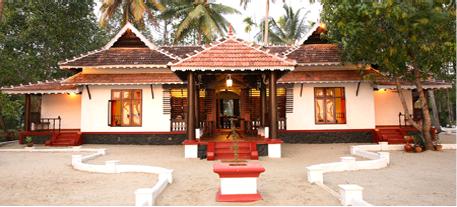PAs architects, we often come across this question: 'What kind of architecture do you like?' Of course, this question doesn't really take into account the technical aspects of architecture, and we know that, but we have to admit that we're all inclined towards some particular style.
The whole point of today's post is to share my kind of architecture with you. I hope you'll leave something in the comments section to tell me about the styles you favor, too.
What I'm going to do now is divide some of the buildings I like in categories based on function and list and show them to you using pictures.
1. Houses
i. Stone House, Portugal
I discovered this building while doing a study on stone as a construction material in first year and fell in love with it. I think it's the Flinstones-inspired quirkiness that drew me in. The house is built completely of stone and perfectly blends with it's natural surroundings. Ins spite of it's unusual shape, the house is said to be very cosy inside, and the unique shape and construction doesn't hamper the functionality of the house, something that often happens in interesting-looking buildings.
ii. Houses in Troglodyte village, Iran
The houses shown above were carved out of volcanic rock. Some of them have been around for over 700 years. Since they've been carved out of the existing landscape, they blend with the surroundings completely. Let's see some charming interior shots:
Who doesn't want a living room that looks like this?
And have a courtyard like this one?
iii. Lots of not-so-famous houses in Kerala
In an age where many opt for the Western minimalist look, the people of Kerala often embrace their traditions. The tiled pitched roof, the courtyards with the tulasi in the centre, the porches and balconies- there's a scientific reason for why they came to be a part of the architecture of the state in the first place, and it's good to incorporate them in designs even in present times.
i. METI- Handmade School in Bangladesh
This shool, made entirely of sustainable materials, was designed by Anna Heringer nad Eike Roswa. Frankly, I'm not very impressed aboutt he 'sustainable materials' part or 'manual construction' part, because such things are common in countries like Bangladesh and India. But I do like the design as a whole.
ii. Project Frog's Eco-Friendly Schools
Sometimes, we need prefab architecture, and it's best if it's sustainable. This school is a prefab school with repeating units made with recycled materials and utilizes only solar power for it's use. Somehow I like the repetitive nature of this school, and it's admirable how quickly and efficiently it was built.
iii. Orestad High School, Copenhagen
Just look at the picture below and tell me you don't wish your school were like this:
Am I right, or am I right?
That's all for the first part of this series. Be sure to tell me all about your favorite school and residential buildings in the comments section below!
The whole point of today's post is to share my kind of architecture with you. I hope you'll leave something in the comments section to tell me about the styles you favor, too.
What I'm going to do now is divide some of the buildings I like in categories based on function and list and show them to you using pictures.
1. Houses
i. Stone House, Portugal
I discovered this building while doing a study on stone as a construction material in first year and fell in love with it. I think it's the Flinstones-inspired quirkiness that drew me in. The house is built completely of stone and perfectly blends with it's natural surroundings. Ins spite of it's unusual shape, the house is said to be very cosy inside, and the unique shape and construction doesn't hamper the functionality of the house, something that often happens in interesting-looking buildings.
ii. Houses in Troglodyte village, Iran
 |
Who doesn't want a living room that looks like this?
And have a courtyard like this one?
iii. Lots of not-so-famous houses in Kerala
In an age where many opt for the Western minimalist look, the people of Kerala often embrace their traditions. The tiled pitched roof, the courtyards with the tulasi in the centre, the porches and balconies- there's a scientific reason for why they came to be a part of the architecture of the state in the first place, and it's good to incorporate them in designs even in present times.
2. Schools
I have always wanted to design schools. When I grow up I hope to design lots of schools for all kinds of children everywhere in the world. So, of course, this is a special category for me.i. METI- Handmade School in Bangladesh
This shool, made entirely of sustainable materials, was designed by Anna Heringer nad Eike Roswa. Frankly, I'm not very impressed aboutt he 'sustainable materials' part or 'manual construction' part, because such things are common in countries like Bangladesh and India. But I do like the design as a whole.
 |
| Elevation |
 |
| I really like what they've done with the light here. |
 |
| Niches for play and study- my favorite part. |
Sometimes, we need prefab architecture, and it's best if it's sustainable. This school is a prefab school with repeating units made with recycled materials and utilizes only solar power for it's use. Somehow I like the repetitive nature of this school, and it's admirable how quickly and efficiently it was built.
iii. Orestad High School, Copenhagen
Just look at the picture below and tell me you don't wish your school were like this:
Am I right, or am I right?
That's all for the first part of this series. Be sure to tell me all about your favorite school and residential buildings in the comments section below!












